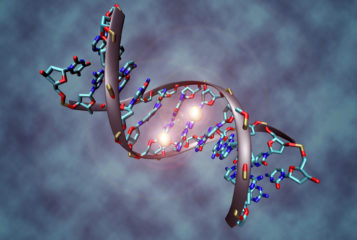|
Mixed Race Britain: Mixed Britannia BBC2, 6-20 October 2011 Presented by George Alagiah |
I am mixed race, and thereby a member the fastest growing ethnic minority in the UK. My British dad met my Sri Lankan mum while travelling in the 1970s. They married and settled in Manchester where I grew up. And although I was definitely alive to the fact that their marriage was a joining of two very different cultures, I had no idea of the deep and contentious history of mixed relationships in this country.
In this three-part documentary, George Alagiah recounts the largely untold story of mixed race Britain and the many love stories that overcame extreme social hardship to create it.
The first programme focuses on Britain between 1910 and 1939. It was during the First World War that mixed race relationships began to emerge between British women and foreign port workers. These relationships were strongly unwelcome.
Hostility towards such relationships sparked the nationwide race riots of 1919. Around 15,000 white men ransacked houses in which foreigners were living and left five people dead. Yet foreign men were blamed for the riots and restrictions and curfews were put in place. The women married to them were stripped of their British citizenship, spat at in the streets and labelled as prostitutes.
The mid-1920s saw the rise of the eugenics movement where supposedly scientific justifications were given to validate racist attitudes. A central tenet for eugenicists was that racial mixing would lead to bad breeding and contribute to the degeneracy of the country: morally, physically and intellectually. Simply put, mixed race people were considered as inferior in every sense and science would prove why this was so.
We hear from the children of mixed marriages who recall being prodded and poked, having their heads measured and the colour of their skin, eyes and hair recorded in an attempt to find a correlation between race and intelligence. Such work, it was hoped, would give the UK a reason to follow the lead of many other countries and implement anti-miscegenation laws to rule mixed marriages as illegal.
Unfortunately for the proponents of eugenics, the findings were not always as hoped. While their prejudices enabled the researchers to conclude that mixed black/white children were a mix of the worst racial stereotypes of their parents, the Chinese/white children regularly out-performed their white schoolmates on intelligence tests.
Such findings meant that the eugenics movement was more or less abandoned but societal prejudice still ran strong, making life very difficult indeed for those that followed their hearts into mixed relationships.
The second part of the documentary looks at the period from 1940 to 1965 as mixed race children, or 'war casualties', were beginning to grow up and the country was plagued by what to do about the 'brown baby problem'. We hear of the overwhelming number of children placed in specialist state care homes (after attempts to send them to America failed) and of the young men barred from joining the armed forces due to their 'impure' heritage.
But with new immigration laws allowing citizenship to those from the Commonwealth and the colonies, Britain's racial landscape was changing, and so too were attitudes towards mixed relationships.
The early 1960s featured the first film and television kisses between a black man and a white woman and attracted no end of disgust and fury from the media. However, by 1968, when the first 'real' kiss within a mixed race couple was aired during a documentary, the broadsheets labelled it 'moving and compassionate'. Post-war Britain seemed to be finally tolerating mixed marriages. But that was all — 'tolerating', not 'celebrating'.
The concluding programme covers the period up to the present day, with attitudes on mixed race relationships developing from social taboo to completely ordinary.
There are still many mixed race babies held in state care homes and decisions have to be made as to the most appropriate adopting couple. Should this be a mixed race couple? A black couple? A white couple? Any competent parent?
In a complete turnaround from a previously racist Britain, we see protection of mixed race heritage taken too far when even black parents are told, after a year of compulsory cultural awareness training, that they are not 'black enough' to adopt a half-black child.
This question of appropriate parenting inevitably begs the question of identity and whether white couples adopting black babies (or vice versa) could ever really provide that child with an understanding of his/ her own cultural heritage.
But is 'identity' attached to genetic heritage? Or does it stem from those who raise us and the environment in which we are brought up? Is it inherent or can it be learned? Is it even important? These are questions that are still prevalent today and conflicting viewpoints exist. The law over the last few decades has been equally undecided and has changed a few times.
In summary, all three programmes are packed with interviews and are rich in photographs and footage from the archives. This is a very real and intimate recollection of the history of this country told in the refreshingly honest words of those who were there. All the stories told are different, interesting and moving in their own ways.
And what is most remarkable — even those who describe the most intense adversity and racism never do so with any regret.
We should be proud of the men and women who were brave and open-minded when the rest of the country was racist and hostile. These people were the pioneers of mixed race Britain and I personally, and we as a country, have a lot to thank them for.





Leave a Reply
You must be logged in to post a comment.